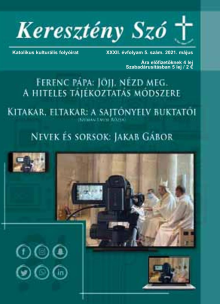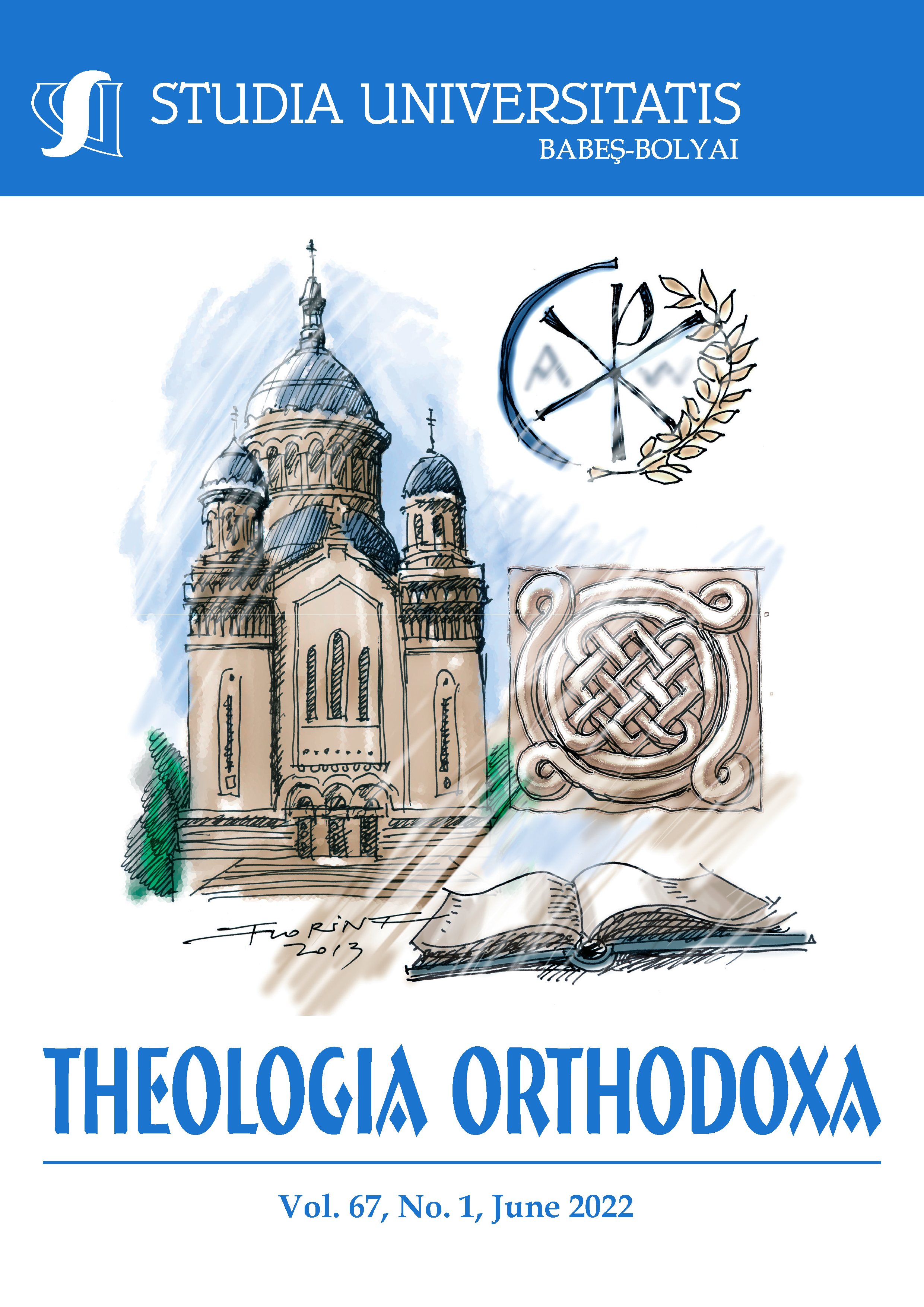
We kindly inform you that, as long as the subject affiliation of our 300.000+ articles is in progress, you might get unsufficient or no results on your third level or second level search. In this case, please broaden your search criteria.



In this paper is presented an overview of liturgical–theological understanding of the Sacrament in history. Explanation of sacraments will be accompanied by appropriate evidence from Holy Scripture, as well as works of certain early Christian Fathers of the Church. Then, relevant theological, sacramental aspects of the Middle ages, the age of Scholasticism, the Council of Trent, and finally, the Second Vatican Council will be consulted, where there will be left a theological reflection of individual prominent Roman Catholic and Orthodox theologians of the Sacrament of Holy Unction. In this work we will put emphasis on the observation of liturgical–theological view on Sacraments in accordance with its ecclesiological, Christological, eschatological, pneumatological meaning and experience of the life of the Church.
More...
In this paper we will present an overview of liturgical and theological understanding of the Sacrament of Penance throughout history. An explanation in regard to the Sacrament will be accompanied by adequate testimonies from the Bible and by writings of the Early Church Fathers. Then, we will present relevant theological and sacramental aspects and perceptions of individuals from the Middle Ages, the Age of Scholasticism, the Council of Trent and the Second Vatican Council. We will also certainly mention the theological views of some prominent Roman Catholic and Orthodox theologians regarding the sacrament of repentance. In this work we would like to emphasize the liturgical and theological meaning of the Sacrament of Penance in accordance with its Ecclesiological, Christological, Pneumatological and Eschatological experience the life of the Church.
More...
This paper aims to present liturgical – theological understanding of the Holy Sacrament Priesthood throughout history. Explanation about this the Holy Mysteries will follow the appropriate certificates from Holy Scripture, as well as works of some early Christian Fathers of the Church. Then, it will be consulted relevant theological, sacramental aspects of the Middle Ages, the age of Scholasticism, the Council of Trent, and finally the Second Vatican Council, where there will be overlooked as a theological reflection of individual prominent Roman Catholic and Orthodox theologians of the Holy Sacrament of the Priesthood. We want the work we put emphasis on the consideration of liturgical – theological sense Holy Sacraments in accordance with its ecclesiological, Christological, eschatological, pneumatological and experience the life of the Church.
More...
This paper will present an overview of liturgical – theological understanding of the Holy Sacraments of Marriage throughout history. Explanation regarding the sacrament will follow the appropriate certificates from the Holy Scripture, as well as works of certain early Christian Fathers of the Church. Then, it will be presented relevant theological, sacramental aspects of the Middle Ages, the age of Scholasticism, the Council of Trent, and finally, the Second Vatican Council, where we will leave out the theological thinking of some prominent Roman Catholic and Orthodox theologians of the Holy Sacrament of Matrimony. In this work we put emphasis on consideration of liturgical – theological sense Holy Sacraments in accordance with its ecclesiological, Christological, eschatological, pneumatological and experience in the life of the Church.
More...
In this paper the author will present an overview of the liturgico- theological understanding of the Holy Sacrament in history. Explanation of the Holy mysteries will be accompanied by an appropriate evidence from Holy Scripture, as well as from the works of certain early Christian Fathers of the Church. Then, the relevant theological, sacramental aspects of the Middle ages, the age of Scholasticism, the Council of Trent, and finally, the Second Vatican Council, would be considered. In this article we will also put an emphasis on the observation of liturgico- theological meaning of the Holy Sacraments in accordance with its ecclesiological, Christological, eschatological, pneumatological and experience in the life of the Church.
More...








The article contains a stylistic comparison of the analysis of religious objects and their description of the landscape of the Carpathian region.
More...
The present essay aims at presenting key aspects of the ecumenical vision of Pope Francis in the perspective of evangelization. First, the author focused upon the interdependence of the ecumenical movement and the evangelizing mission of the Church. Next, the author presented selected elements of the ecumenical vision of Pope Francis: the nature and aim of ecumenical efforts, the model of unity and basic dimensions of the dynamics of striving to realize it. Finally, the author formulated his conclusions and pointed to some issues which must be investigated further. It follows from the analysis made that perceiving ecumenism in the perspective of evangelization is an important key to a better understanding of the ecumenical thought and activity of Pope Francis.
More...
Adorjáni Zoltán 2021 novemberében töltötte be 65. életévét. A Kolozsvári Protestáns Teológiai Intézetben 31 éve tevékenykedik oktatóként, s annak tíz évig, 2006 és 2016 között dékánja is volt. Az ünnepelt kollégái, egykori tanítványai és barátai tanulmánykötetet állítottak össze tiszteletére. Köszöntésére és az elkészült ünnepi kötet bemutatására február 25-én került sor az intézet dísztermében.
More...
Tisztelettel és szeretettel köszöntöm Adorjáni Zoltánt, egykori tanáromat, kollégámat, családtagjaival és azokkal együtt, akik eljöttek ma, hogy velünk együtt ünnepeljenek.
More...
The present study aims first and foremost to provide (ikon) painters with the theological content required to carry out a theoretical process of familiarisation with the basic notions that they would be recommended to take into consideration before starting to work on an ikon. In the absence of this information, a painter would find it difficult to understand the theological message of the event they are rendering in art form and therefore encounter significant hindrances in attaining the final goal of their confession of faith. Furthermore, by highlighting the way the pattern of representation of the ikon/scene has evolved and subsequently crystallised, this paper seeks to enable (ikon) painters to understand the defining elements that lie at the foundation of the Byzantine model for representing an event are, to avoid the exclusion of certain essential details from their renditions, which need to fit into the dynamism of Church Tradition. To that end, we have set out to apply these theoretical rigors to a scene from the life of the Mother of God – the announcement of her birth –to provide the reader with the opportunity to take note of the steps to follow before creating an ikon/scene.
More...